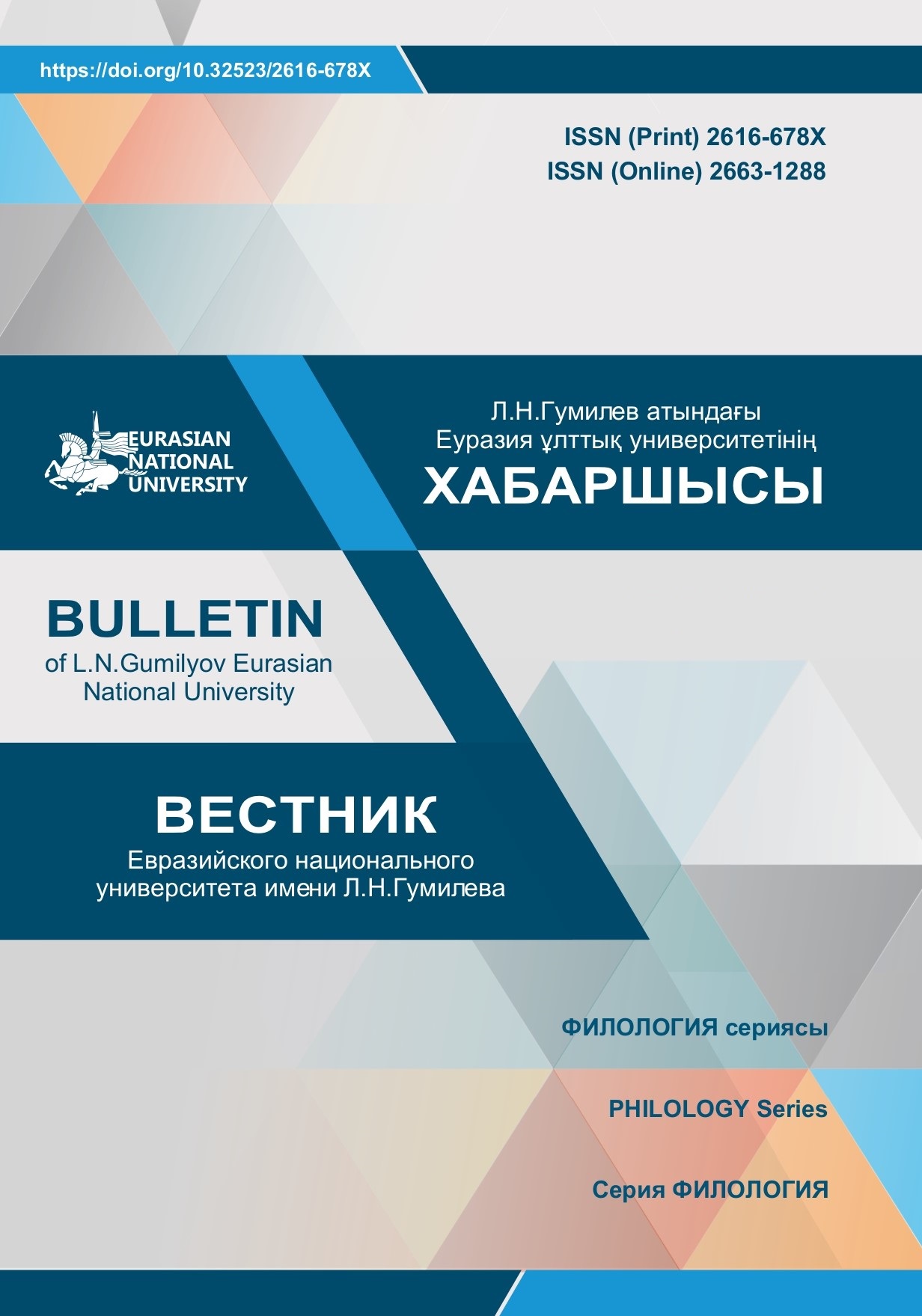The concept of “Age” and its idiomatic representation in the Azerbaijani, English and Russian languages
Views: 156 / PDF downloads: 69
DOI:
https://doi.org/10.32523/2616-678X-2019-126-1-157-164Keywords:
Semantic fields, idiomatic expressions, culture, languageAbstract
The article discloses the close relationship between language and culture by exploring
the semantic field “Age groups”, one of the most specific constituents of macro-field “Time”, in three
languages: Azerbaijani, English and Russian. Idiomatic expressions that comprise each sub-group of the
semantic field “Age groups”, i.e. “Infancy”, Adolescence”, Youth”, Adulthood”, “Old age”, have been
studied to achieve the following goals: 1) by carrying out a semantic analysis to reveal peculiarities of their
figurative meanings, spot the cases of semantic richness that allows idioms to represent more than one group
and identify their location within semantic fields; 2) to point out the existing similarities and differences in
terms of their semantics or grammatical structure; 3) to translate (literal meaning) and interpret idioms to
disclose their culture-related and gender-targeted features; 4) by applying a quantitative analysis to identify
the frequency use and composition or approximate “size” of the semantic fields that depends on the number
of its idiomatic representatives; and 5) to make comparisons between the researched languages. Idioms
gathered from a variety of sources have been collated and arranged into semantic groups according to their
relevance to each stage in human development.







